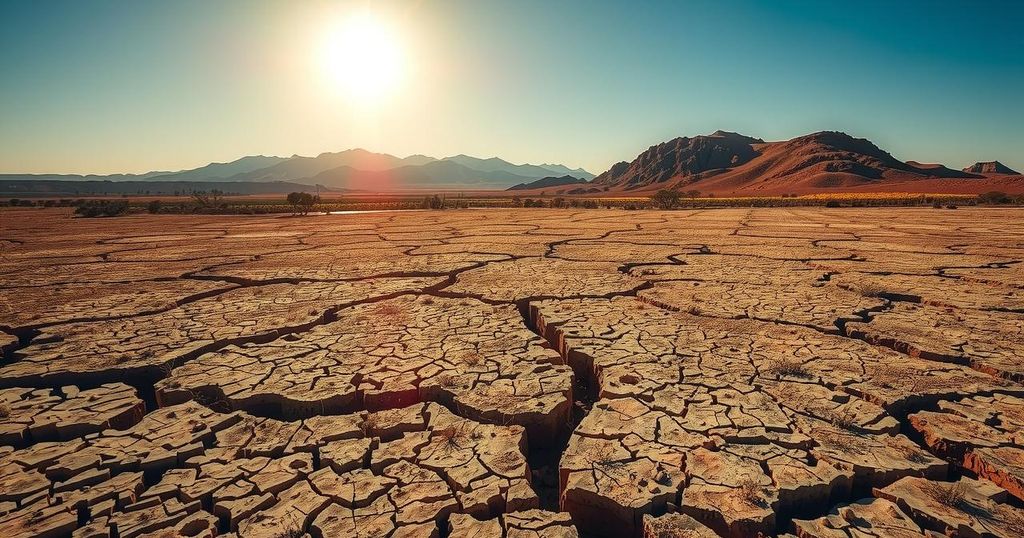Concerns Rise Over NOAA Facility Closures as Stakeholders Demand Action
The potential closure of NOAA facilities critical for weather forecasting is raising concerns among scientists and industry leaders. They believe such cuts could negatively affect public safety and the economy. Stakeholders are urging the administration to reconsider, stressing the importance of NOAA’s data for various sectors, including agriculture and insurance.
The looming closure of three federal buildings crucial for the National Oceanic and Atmospheric Administration’s (NOAA) weather forecasting has raised serious concerns among scientists and industry leaders. They are urging the Trump administration to reconsider these cuts, which they believe could jeopardize public safety and the economy.
A listing by the General Services Administration (GSA) indicated that a NOAA satellite operations facility in Maryland was labeled as “not core to government operations,” although this information subsequently vanished from the website. The potential relocation or loss of NOAA staff and technology raises apprehensions regarding the impact on meteorologists, climate scientists, and global businesses reliant on NOAA data.
Industry stakeholders from sectors such as insurance, agriculture, and fishing are appealing to Commerce Secretary Howard Lutnick, urging him to protect NOAA’s operations. The Reinsurance Association of America emphasized in a letter that funding NOAA is a “cost-effective” investment, crucial for data collection on major storm events and significant disasters impacting the United States annually.
The facilities under scrutiny are pivotal for disseminating weather hazard warnings and managing Doppler radar systems essential for accurate forecasting. They are integral to a national infrastructure that collects vital Earth science data.
According to Florence Rabier, the director general of the European Center for Medium-Range Weather Forecasts, discontinuing Earth monitoring will have enduring repercussions, potentially affecting generations. The agency is advocating for stronger scientific collaboration with the United States for mutual advantages.
The potential lease terminations and building closures are part of the Trump administration’s broader efforts to reduce government expenditures, as GSA officials noted that noncore facilities incur substantial operational costs without providing adequate work environments for federal employees. Disinvestment in weather and climate science could cost society severely, with the American Meteorological Society advocating that such data supports over $100 billion in U.S. economic activity annually.
Meteorologist Brad Panovich expressed dire warnings regarding closures, suggesting they could have catastrophic financial repercussions for the U.S. A coalition of 170 fishing entities also appealed to the government for continued access to critical weather data.
Academic officials have cautioned that loss of NOAA data may lead to adverse effects on agriculture, including reduced crop yields and insufficient water resource management. The Center for Weather and Climate Prediction, termed the “central nervous system for NOAA’s predictive capabilities,” is also under threat of closure despite its essential role since its opening in 2012. It plays a crucial part in forecasting severe weather and understanding larger climate patterns.
The Radar Operations Center in Oklahoma monitors a network of 122 Doppler systems vital for safety. Despite its importance, it too is facing lease termination risks. The NOAA Satellite Operations Facility in Suitland is responsible for managing equipment that monitors weather conditions nationwide but appears also on the GSA’s list of non-core properties.
Scientists are questioning whether potential facility closures indicate a larger governmental withdrawal from data collection and analysis needed for accurate forecasts. Andrew Rosenberg, a former NOAA official, raised concerns about how the government plans to continue fulfilling its responsibilities to the American people if data collection ceases.
The proposed closures of key NOAA facilities have ignited a coalition of voices from scientific and industrial sectors emphasizing their significance in maintaining public safety and economic stability. Warnings from experts and stakeholders underline the necessity of NOAA’s data to manage weather-related risks effectively, bolstering the nation’s economic framework. The ramifications of cutting such crucial services could extend beyond immediate concerns, posing long-term threats to safety and financial health.
Original Source: www.washingtonpost.com




Post Comment